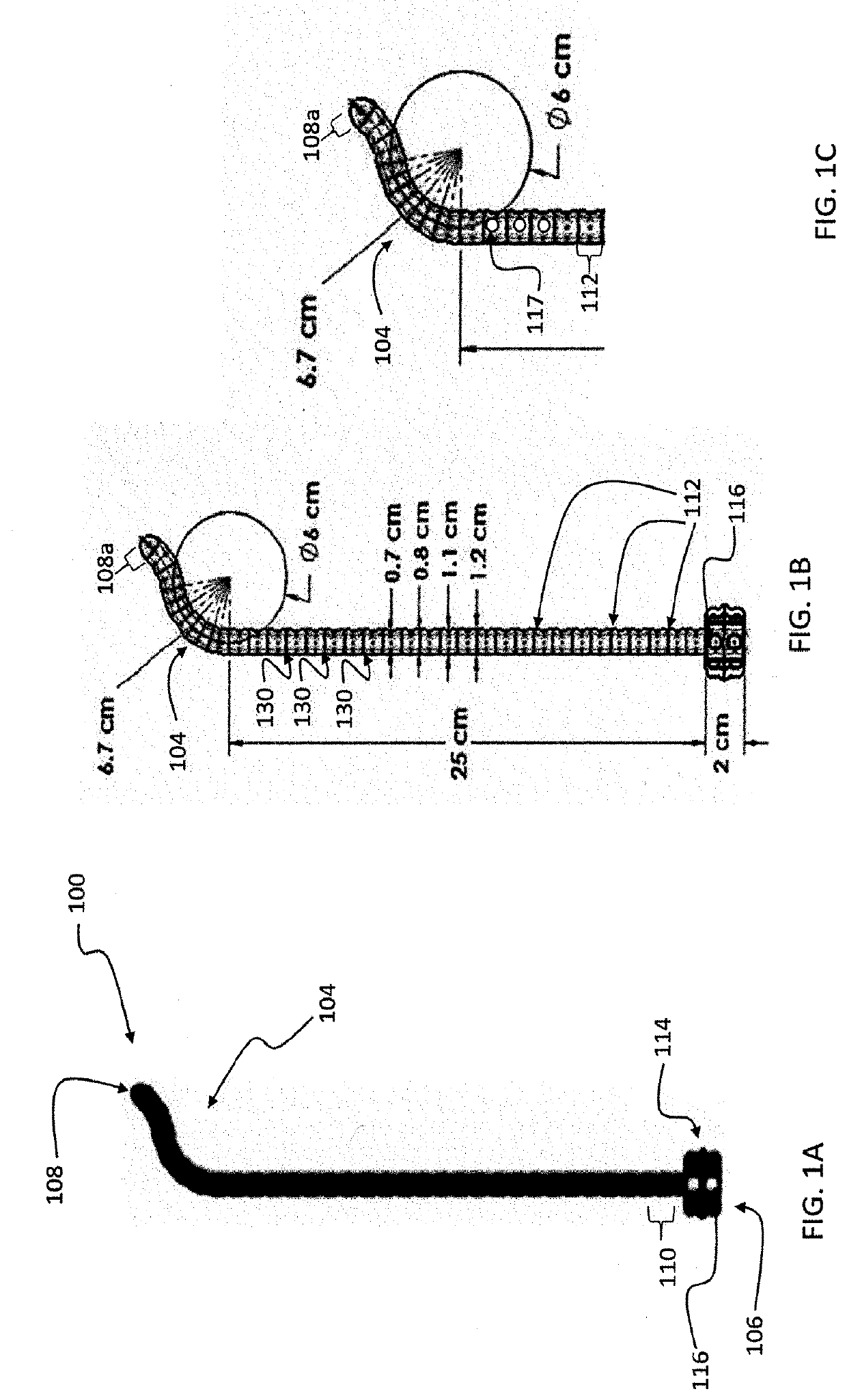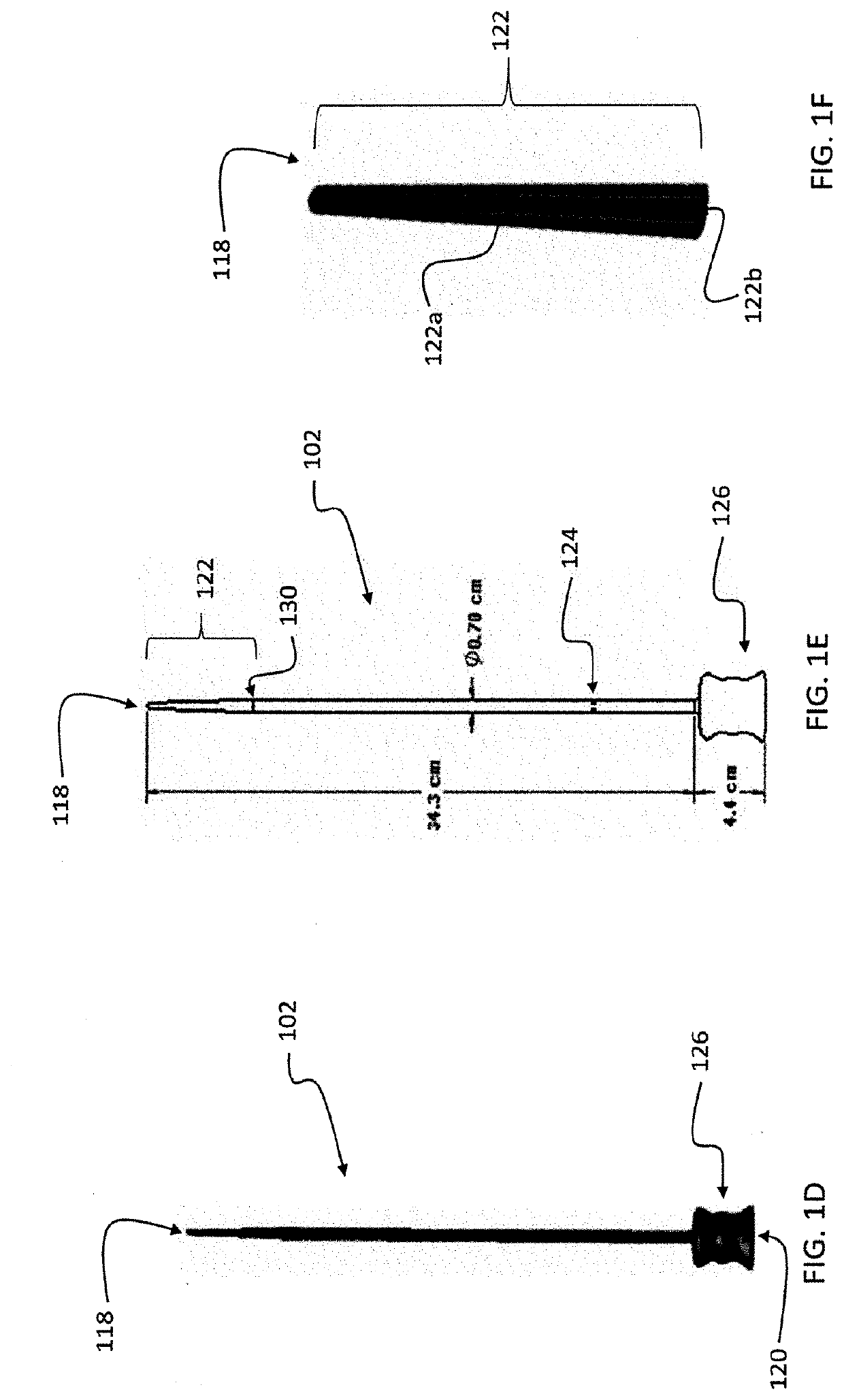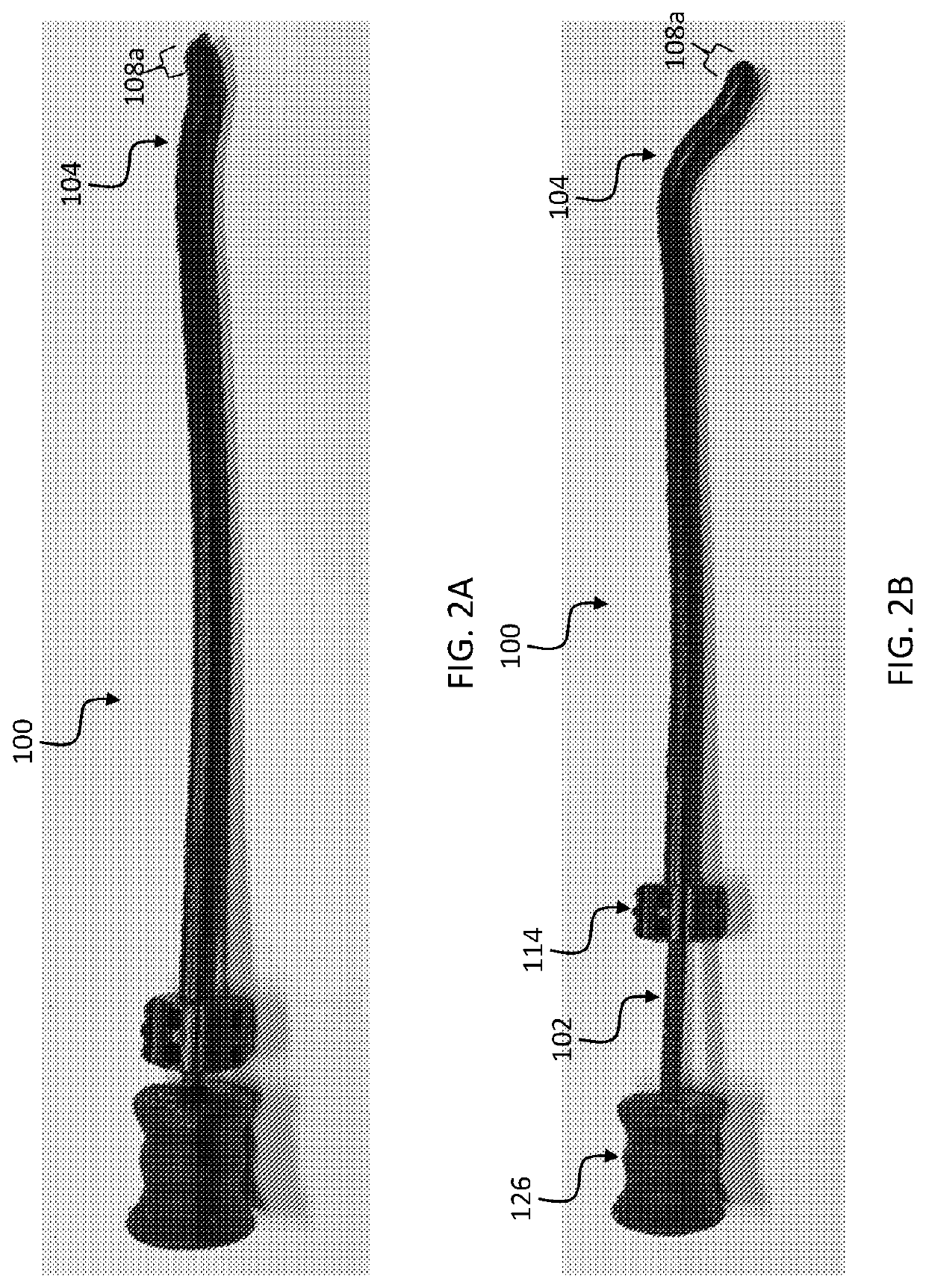Esophageal deflection device
a deflection device and esophageal technology, applied in the field of medical devices, can solve the problems of high risk of esophageal ablation, damage and death, and the deflection procedure does not ensure the displacement of the esophageal cavity, so as to achieve variable stiffness, increase density, and different stiffness
- Summary
- Abstract
- Description
- Claims
- Application Information
AI Technical Summary
Benefits of technology
Problems solved by technology
Method used
Image
Examples
Embodiment Construction
[0016]A preferred embodiment of the invention is an esophageal deflection device. The device includes a resilient outer elongate tube with a naturally curved section dimensioned and configured to insert into an esophagus and deflect the esophagus and another retractable tube or rod for reducing the curved section during insertion into the esophagus and allowing the naturally curved section of the elongate outer tube to return resiliently to its natural shape under control of a practitioner during a procedure to deflect the esophagus. In preferred embodiments, an insertion tube or rod slides within the outer elongate tube. The insertion tube or rod has portion that is stiffer than the elongate other tube.
[0017]The device can include additional features, such as a temperature probe, pressure / force sensor, or x-ray detectable insert desired at contact edge or along tube for feedback to user. By using a radio opaque material at the tip, cardiologists can use tools most familiar to them ...
PUM
 Login to View More
Login to View More Abstract
Description
Claims
Application Information
 Login to View More
Login to View More - R&D
- Intellectual Property
- Life Sciences
- Materials
- Tech Scout
- Unparalleled Data Quality
- Higher Quality Content
- 60% Fewer Hallucinations
Browse by: Latest US Patents, China's latest patents, Technical Efficacy Thesaurus, Application Domain, Technology Topic, Popular Technical Reports.
© 2025 PatSnap. All rights reserved.Legal|Privacy policy|Modern Slavery Act Transparency Statement|Sitemap|About US| Contact US: help@patsnap.com



